PPT
advertisement
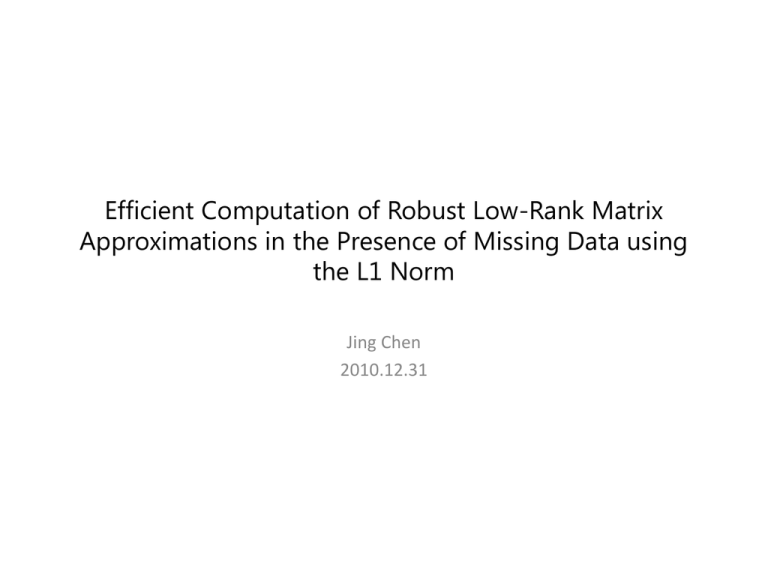
Efficient Computation of Robust Low-Rank Matrix Approximations in the Presence of Missing Data using the L1 Norm Jing Chen 2010.12.31 文章信息 标题 Efficient Computation of Robust Low-Rank Matrix Approximations in the Presence of Missing Data using the L1 Norm 出处 CVPR,2010 作者信息 Anders Eriksson – 阿德雷德大学计算机科学系 Anton van den Hengel – 职位 • Director :The Australian Centre for Visual Technologies • Professor :CS, The University of Adelaide – 研究领域 Video Trace, Rapid interactive scene modeling from video Constrained Generalized Principal Component Analysis Parameter Estimation Camera calibration and ego-motion determination from image sequences (structure from motion) • Space carving • • • • – 文章发表情况 • TIP’07, TOG’07… Abstract The calculation of a low-rank approximation of a matrix is a fundamental operation in many computer vision applications. The workhorse of this class of problems has long been the Singular Value Decomposition. However, in the presence of missing data and outliers this method is not applicable, and unfortunately, this is often the case in practice. In this paper we present a method for calculating the low-rank factorization of a matrix which minimizes the L1 norm in the presence of missing data. Our approach represents a generalization the Wiberg algorithm of one of the more convincing methods for factorization under the L2 norm. By utilizing the differentiability of linear programs, we can extend the underlying ideas behind this approach to include this class of L1 problems as well. We show that the proposed algorithm can be efficiently implemented using existing optimization software. We also provide preliminary experiments on synthetic as well as real world data with very convincing results. 摘要 矩阵低秩近似计算是许多计算机视觉应用的一项基本运算。 一直以来,解决该问题的主要方法是奇异值分解。然而, 在缺少数据和存在outliers时,奇异值分解的方法并不适 用,而且,不幸的是,实际应用中我们常常需要面对这种 情况。 在本文中,我们提出了一种方法,计算在数据丢失的情况 下最小化L1范数的矩阵低质分解。Wiberg算法是在L2范数 下进行矩阵分解的许多令人信服的方法之一。我们的方法 是该方法的一个泛化。通过利用线性规划的可微性,我们 将该方法扩张到L1范数下。 我们的研究表明,使用现有的优化软件,可以有效地实现 该算法。我们还提供了在合成数据以及现实世界的数据上, 有着非常令人信服结果的初步实验。 引言 低质矩阵分解 min Wˆ Y UV U ,V Y R mn ,U R mr rn ,V R ,W R 范数 – L1-norm A 1 aij i, j – L2-norm A2 a 2 ij i, j mn 引言 低质矩阵分解研究意义 – – – – – Structure from motion Polyhedral object modeling from range images Layer extraction Recognition Shape from varying illumination 当前方法的问题 – 以L2范数为测度 • 数据存在噪声或部分丢失 – 以L1范数为测度 • 能降低对outlier的敏感程度 • 在存在数据丢失情况的下:non-smooth & non-convex M.Turk and A. Pentland. Eigenfaces for recognition, Journal of Cognitive Neuroscience, 1991 引言 本文的工作 min Wˆ Y UV U ,V 1 Y R mn,U R mr ,V R rn,W R mn – L1范数 – 存在缺失数据 – 非平滑性和计算需求 符号说明 I n : n n单位矩阵 : 阿达马乘积 : 克罗内克积 u vec(U ) v vec(V ) 符号说明 克罗克内积 相关工作——高斯牛顿算法 m min ri x 2 i 1 ri :是关于x的非线性函数 相关工作-高斯牛顿算法 相关工作——Wiberg算法 min Wˆ Y UV U ,V 2 2 Y R mn,U R mr ,V R rn,W R mn Start at some initial guess U W diag wˆ wˆ vec (Wˆ ) v vec (V ) 相关工作——Wiberg算法 min Wˆ Y UV U ,V 2 2 Y R mn,U R mr ,V R rn,W R mn ˆ W diag w ˆ vec (Wˆ ) w v vec (V ) 相关工作——Wiberg算法 U In U v1 v ... U nmnr C I n U v u1v1 u v C 2 2 u v m n vr nr1 ui : U的第i行 v j : V 的第j列 相关工作——Wiberg算法 min Wˆ Y UV U ,V 2 2 Y R mn,U R mr ,V R rn,W R mn ˆ W diag w ˆ vec (Wˆ ) w v vec (V ) 相关工作——Wiberg算法 min Wˆ Y UV U ,V 2 2 Y R mn,U R mr ,V R rn,W R mn Start at some initial guess U(0) At iteration k 问题转化为了关于v的线性最小二乘问题,可以解析求解 将v*代入优化目标 相关工作-Linear Programming and Differentiation Canonical form 相关工作-Linear Programming and Differentiation Canonical form 相关工作-Linear Programming and Differentiation Canonical form L1 - Wiberg Algorithm Problem Let V *(U) denote the optimal basic solution of (33)-(36) L1 - Wiberg Algorithm Let V *(U) denote the optimal basic solution of (33)-(36) L1 - Wiberg Algorithm Problem L1 - Wiberg Algorithm L1 - Wiberg Algorithm 在合成数据上的实验 [-1,1]均匀分布 随机去掉20%的点 再给10%的点叠加上[-5, 5]的均匀噪声 m=7, n=12, r=3 在合成数据上的实验结果 A histogram representing the frequency of different magnitudes of error in the estimate generated by each of the methods. [Frequency vs. Error] 在合成数据上的实验结果 Plots showing the norm of the residual at each iteration of two randomly generated tests for both the L1 Wiberg and alternated quadratic programming algorithms. [Residual norm vs.Iteration] 在合成数据上的实验结果 A plot showing the convergence rate of the alternated quadratic programming and L1-Wiberg algorithms over 100 trials. The error are presented on a logarithmic scale. [Log Error vs. Iteration] 在合成数据上的实验结果 在真实数据上的实验结果 Q&A Thank you!
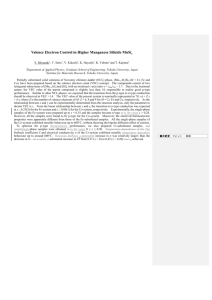
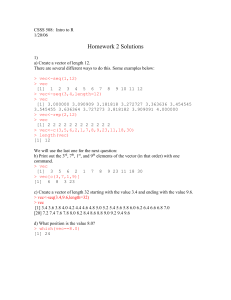
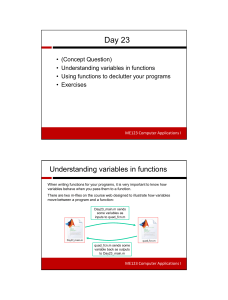
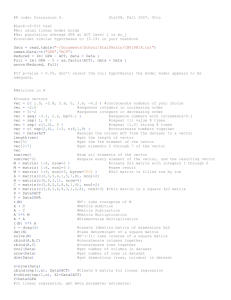




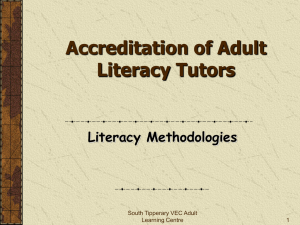

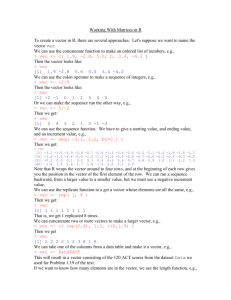
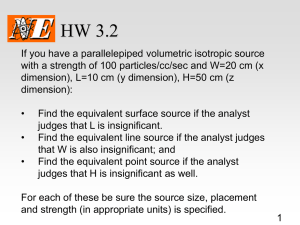
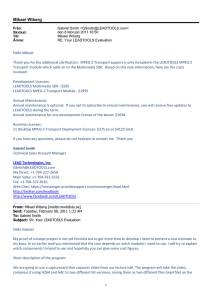
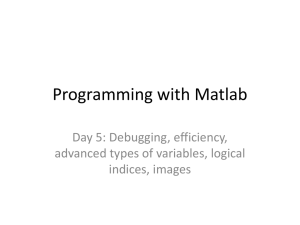
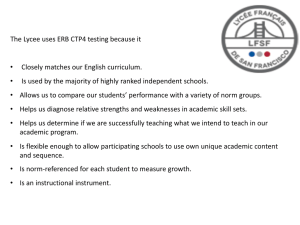

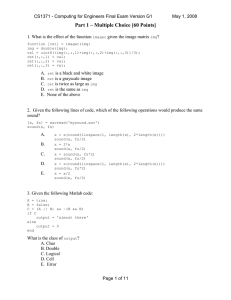

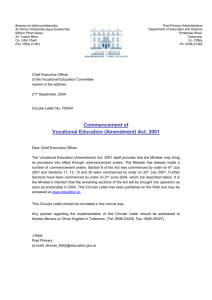
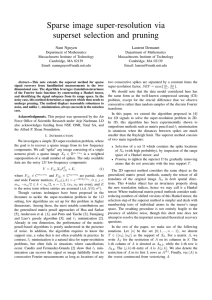
![Part 2 – Multiple Choice [20 points]](http://s2.studylib.net/store/data/010173263_1-776bf766623e70b853aa9d7ff1c3f302-300x300.png)
